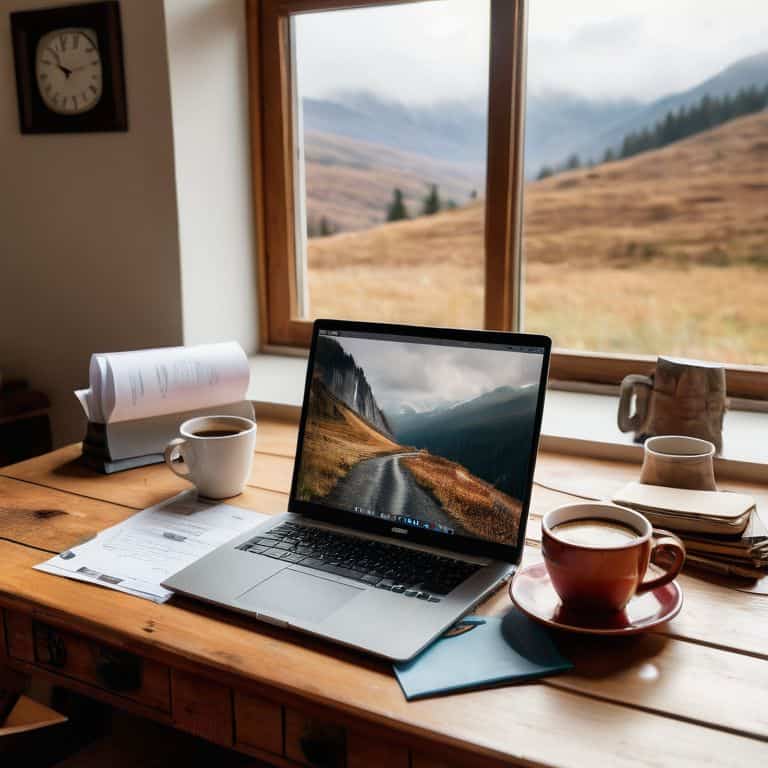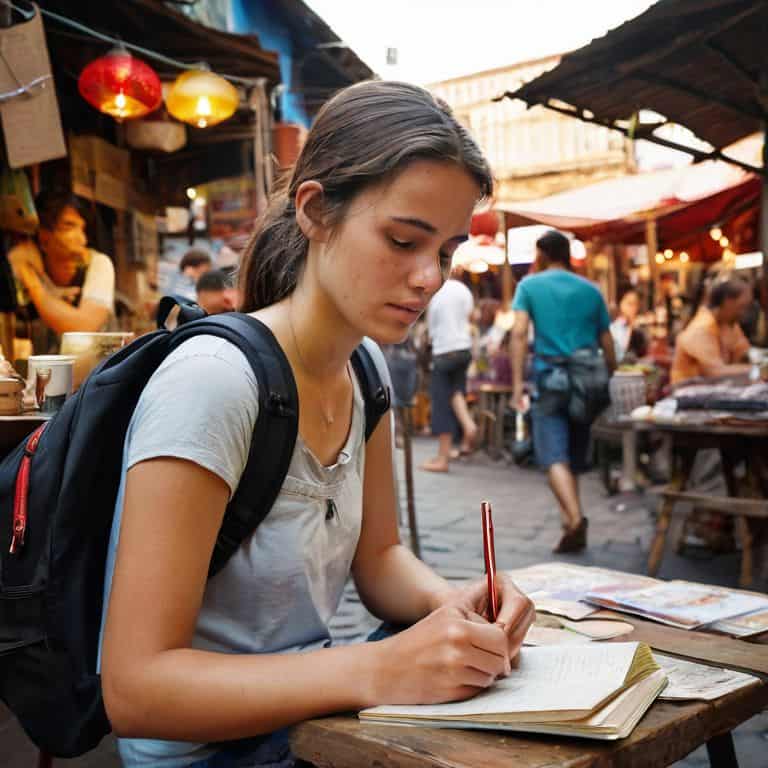I still remember the first time I tried writing my first travel blog post – I was stuck in a cramped hostel room in Bangkok, staring at a blank screen with no idea where to start. The internet was flooded with generic tips and tricks, but none of them seemed to capture the essence of what I was trying to do: share my real, unfiltered experiences with others. As I delved deeper into the world of travel blogging, I realized that most people were more focused on crafting the perfect Instagram caption than actually telling a story worth reading.
If you’re ready to ditch the fluffy language and get down to business, then you’re in the right place. In this article, I’ll share my no-nonsense advice on writing your first travel blog post that’s actually worth reading. I’ll walk you through the process of crafting a compelling narrative, from brainstorming ideas to editing your draft. You’ll learn how to avoid common pitfalls, like sounding too touristy or trying to appeal to everyone at once. By the end of this guide, you’ll have a clear understanding of how to create a travel blog post that’s authentic, engaging, and practical. So, let’s get started and turn your travel stories into compelling content that will leave your readers wanting more.
Table of Contents
- Guide Overview: What You'll Need
- Step-by-Step Instructions
- Writing Your First Travel Blog Post
- Cutting Through the Noise: 5 Essential Tips for Writing Your First Travel Blog Post
- Key Takeaways for New Travel Bloggers
- The Raw Truth
- Putting It All Together: Your First Travel Blog Post
- Frequently Asked Questions
Guide Overview: What You'll Need

Total Time: 1 hour 30 minutes
Estimated Cost: $0 – $10
Difficulty Level: Easy
Tools Required
- Computer (with internet connection)
- Text Editor (such as Notepad or Google Docs)
- Camera (for uploading photos, optional)
Supplies & Materials
- Travel Journal (for referencing past trips)
- Map or Guidebook (for fact-checking, optional)
Step-by-Step Instructions
- 1. First, define your niche: what kind of travel blog post are you writing? Is it about a specific destination, a type of travel (e.g., backpacking, luxury), or a particular activity (e.g., hiking, foodie adventures)? Be specific, as this will help you tailor your content and attract the right audience. I’ve found that having a clear niche helps me stay focused and ensures my content is relevant to my readers.
- 2. Next, brainstorm a list of potential topics within your niche. Ask yourself questions like: What are my favorite travel memories? What challenges have I faced on the road, and how did I overcome them? What tips and tricks can I share with my readers to make their travels easier and more enjoyable? Write down as many ideas as you can, no matter how silly or insignificant they may seem. This is the foundation of your travel blog post, and you can always refine it later.
- 3. Now, choose a specific story or experience to focus on. This could be a memorable encounter with a local, a challenging hike, or a mouth-watering food experience. Try to recall as many details as possible, including sights, sounds, and emotions. This will help you bring your story to life and make it more engaging for your readers. I like to think of this step as “reliving” my travels, and it always gets me excited to share my experiences with others.
- 4. With your story in mind, create an outline to organize your thoughts and structure your post. This should include an introduction, main body, and conclusion. Consider using a chronological structure, where you describe your experience in the order it happened. Alternatively, you could use a thematic structure, where you group related ideas or events together. Either way, your outline should provide a clear roadmap for your readers to follow.
- 5. Next, write your introduction, which should be brief, engaging, and informative. Aim to hook your readers with an interesting fact, a personal anecdote, or a thought-provoking question. Keep your language concise and conversational, as if you were talking to a friend. I like to think of my introduction as a “virtual handshake” – it sets the tone for the rest of the post and helps readers decide if they want to keep reading.
- 6. Now it’s time to write the main body of your post, which should be the meat of your story. Use descriptive language to bring your experience to life, and try to include as many sensory details as possible. This will help your readers visualize your story and feel like they’re right there with you. Don’t be afraid to use humor or vulnerability to make your story more relatable and authentic.
- 7. As you near the end of your post, summarize your key takeaways and reflect on what you learned from your experience. This could be a practical tip, a cultural insight, or a personal realization. Try to distill your story down to its essence, and provide your readers with something they can apply to their own travels. I like to think of this step as “paying it forward” – sharing my knowledge and experience with others to help them have better travels.
Writing Your First Travel Blog Post

As I reflect on my own journey as a travel blogger, I realize that _crafting a compelling narrative_ is key to drawing readers in and keeping them engaged. When it comes to travel blog post ideas, the possibilities are endless, but it’s essential to find a unique angle or perspective that sets your story apart. I’ve found that how to write a travel article is just as important as the destination itself – it’s all about bringing the place to life through descriptive language and vivid imagery.
To make your travel blog post shine, consider optimizing for search engines by incorporating relevant keywords and meta descriptions. However, don’t sacrifice your writing style for the sake of SEO – remember, your goal is to create engaging travel content that resonates with readers. I’ve learned that a well-structured format, including headings, subheadings, and concise paragraphs, can make all the difference in keeping readers engaged.
When it comes to travel writing tips for beginners, I always advise new bloggers to focus on using storytelling techniques to convey their experiences. Rather than listing off a string of dry facts and figures, try to weave a narrative that transports readers to the destination alongside you. By doing so, you’ll not only create a more immersive experience but also establish a personal connection with your audience, which is essential for building a loyal following.
Crafting Raw Travel Blog Post Ideas
To craft raw travel blog post ideas, ditch the clichés and focus on your genuine experiences. What did you struggle with during your trip? What surprised you? What did you learn about the local culture? These are the stories that will resonate with your readers. For me, some of my best blog posts have come from getting lost in a new city or trying a weird food that I didn’t like.
Think about the conversations you had with fellow travelers or locals – what tips or insights did you exchange? These are the kinds of raw, unfiltered stories that will make your blog post stand out. Don’t be afraid to share your mistakes or awkward moments, either – they’re often the most relatable and entertaining parts of any travel story.
Storytelling Secrets for New Travel Writers
When it comes to storytelling, new travel writers often struggle to find their voice. I’ve been there too – my early posts were filled with clichés and overly polished descriptions. But the truth is, readers want raw, honest stories that transport them to new places. To craft compelling narratives, focus on the moments that felt most alive to you – the taste of a street food, the sound of a local market, or the feeling of getting lost in an unfamiliar neighborhood. These sensory details will bring your stories to life and make your readers feel like they’re experiencing it all alongside you.
I like to think of my travel stories as a patchwork of memories, stitched together with vivid descriptions and quirky anecdotes. Don’t be afraid to get a little messy and imperfect – it’s often the imperfect moments that make for the best stories.
Cutting Through the Noise: 5 Essential Tips for Writing Your First Travel Blog Post
- Keep it real, keep it raw: ditch the clichés and overused phrases, and focus on telling a story that’s uniquely yours
- Show, don’t tell: instead of listing off a bunch of facts and figures, use descriptive language to bring your readers into the scene
- Be honest about the hard stuff: travel isn’t always easy, and your readers will appreciate your candor about the challenges you faced
- Use your senses: don’t just describe what you saw, but also what you heard, smelled, tasted, and felt – it’ll make your writing more vivid and immersive
- Edit, edit, edit: don’t be afraid to cut out sections that aren’t working, and make sure your post is concise, clear, and free of errors before you hit publish
Key Takeaways for New Travel Bloggers
Ditch the tourist traps and generic travel guides – the best stories come from getting a little lost and embracing local immersion
Raw, honest storytelling is key to writing a travel blog post that resonates with readers – don’t be afraid to share your mistakes and lessons learned
Successful travel blogging is about more than just writing – it’s about mastering the logistics of life on the road, from finding affordable accommodation to navigating unfamiliar cities and cultures
The Raw Truth
Writing your first travel blog post isn’t about crafting a masterpiece, it’s about bleeding your experiences onto the page, imperfections and all, and trusting that your unique voice will be the compass that guides your readers through the chaos of the unknown.
Clara Bishop
Putting It All Together: Your First Travel Blog Post

So you’ve made it this far – congratulations! You’ve learned how to craft raw travel blog post ideas, uncover storytelling secrets, and turn your experiences into a compelling narrative. To recap, the key to writing a great travel blog post is to ditch the fluffy language and focus on sharing your genuine, unvarnished experiences with your readers. Don’t be afraid to get a little messy and share the not-so-pretty moments – it’s often those stories that resonate the most with your audience. Remember, your goal is to create a sense of immersion that draws your readers in and makes them feel like they’re right there with you.
As you click ‘publish’ on your first travel blog post, remember that this is just the beginning of your journey. Writing is a process, and it takes time, practice, and patience to develop your voice and style. Don’t be discouraged if your first post doesn’t go viral – just keep writing, learning, and pushing yourself to tell better stories. With time and dedication, you’ll find your rhythm and your audience will respond. So go ahead, take a deep breath, and share your story with the world. The beauty of travel blogging lies in its ability to connect us, to inspire us, and to remind us that there’s always more to explore, more to discover, and more to write about.
Frequently Asked Questions
How do I balance writing about my personal travel experiences with providing useful information for my readers?
Honesty is key, but so is utility. I balance personal anecdotes with practical tips by asking myself: what would I have wanted to know before arriving in this destination? I weave in advice on transportation, accommodation, and local customs, making my stories informative and relatable.
What's the best way to organize my thoughts and structure my first travel blog post?
Honestly, I’m a checklist fanatic – it helps me stay sane on the road. For your first travel blog post, start by brainstorming key experiences, then group them into categories like ‘transportation’ or ‘food.’ Next, create an outline with intro, body, and conclusion sections. Trust me, it’s easier to write when you have a clear structure in mind.
How can I ensure my writing style is engaging and authentic, rather than coming across as generic or touristy?
Ditch the clichés and overused adjectives – instead, focus on sensory details and personal anecdotes that bring your story to life. Write like you’re recounting a wild night to a friend, not like you’re trying to sell a timeshare. Be honest, be raw, and don’t be afraid to get a little messy – that’s where the real magic happens.
